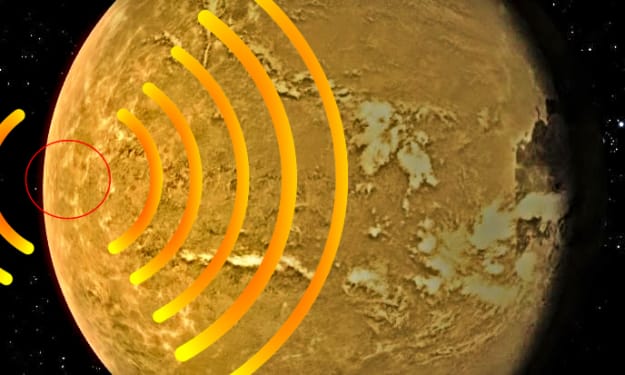
The Cosmic Companion
Bio
The Cosmic Companion has been delivering high-quality, factual scientific news and features since 2018. We also offer a weekly show, Astronomy News with The Cosmic Companion, featuring interviews with scientists around the globe.
Stories (13/0)
Could Alien Microbes Live Off Products of Radioactive Decay?
Microbes living beneath the seafloor feed largely on the products of radioactive decay, aided by sediment of the seafloor, a new study reveals. This finding radically changes how we look at life processes in one of the largest ecosystems on our planet. It could also alter our views of how life may have evolved on Mars or other alien worlds.
By The Cosmic Companion3 years ago in Futurism
Stunning New Images of Venus from the Parker Solar Probe
The Parker Solar Probe, designed for detailed study of the Sun, has another advantage - it is able to examine planets as it passes their orbits. As it refines its orbit around our Sun, Parker will pass Venus a total of seven times over its seven-year mission. The Parker probe uses the gravitational pull of planets to bend its path through the Solar System.
By The Cosmic Companion3 years ago in Futurism
The Exoplanet WASP-107b is a Real Super-Puff
The exoplanet WASP-107b may be as large as Jupiter, but this super-puff planet only contains one-tenth as much mass as the king of our Solar System. The density of this world is lower than what astronomers thought possible.
By The Cosmic Companion3 years ago in Futurism
- Top Story - January 2021
Meet the Extreme Exoplanet TOI-561 bTop Story - January 2021
About 280 light years from Earth, a world of molten magma orbits one of the oldest stars in the galaxy. This exoplanet, 50 percent larger than the Earth, whips around its star at a breathtaking clip.
By The Cosmic Companion3 years ago in Futurism
Finding J0313-1806 - The Most Distant Quasar Ever Seen
More than 13 billion light years from Earth, the quasar J0313–1806 radiates vast quantities of electromagnetic radiation. This body, formed just 670 million years after the Big Bang, is seen shining with 1000 times the total light produced by the Milky Way Galaxy. The supermassive black hole at its center is more than 1.6 billion times more massive than the Sun.
By The Cosmic Companion3 years ago in Futurism
What is BLC-1 - That Weird Signal from Proxima Centauri?
On November 28, 1967, Jocelyn Bell, a young radio astronomer at The University of Cambridge, together with her supervisor Antony Hewish, found an unusual signal in data reported by their instrument. A signal, featuring regular flashes of energy, perplexed the astronomers - what could be generating this clock-like regularity?
By The Cosmic Companion3 years ago in Futurism













